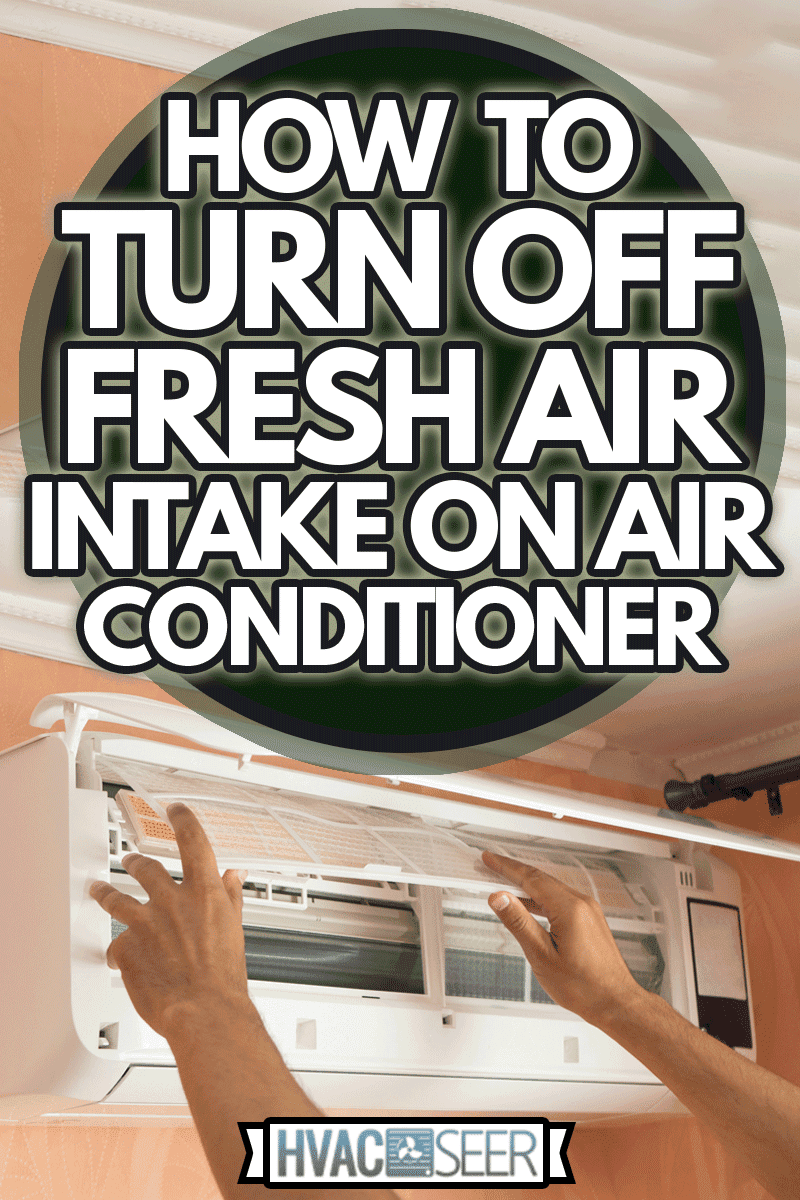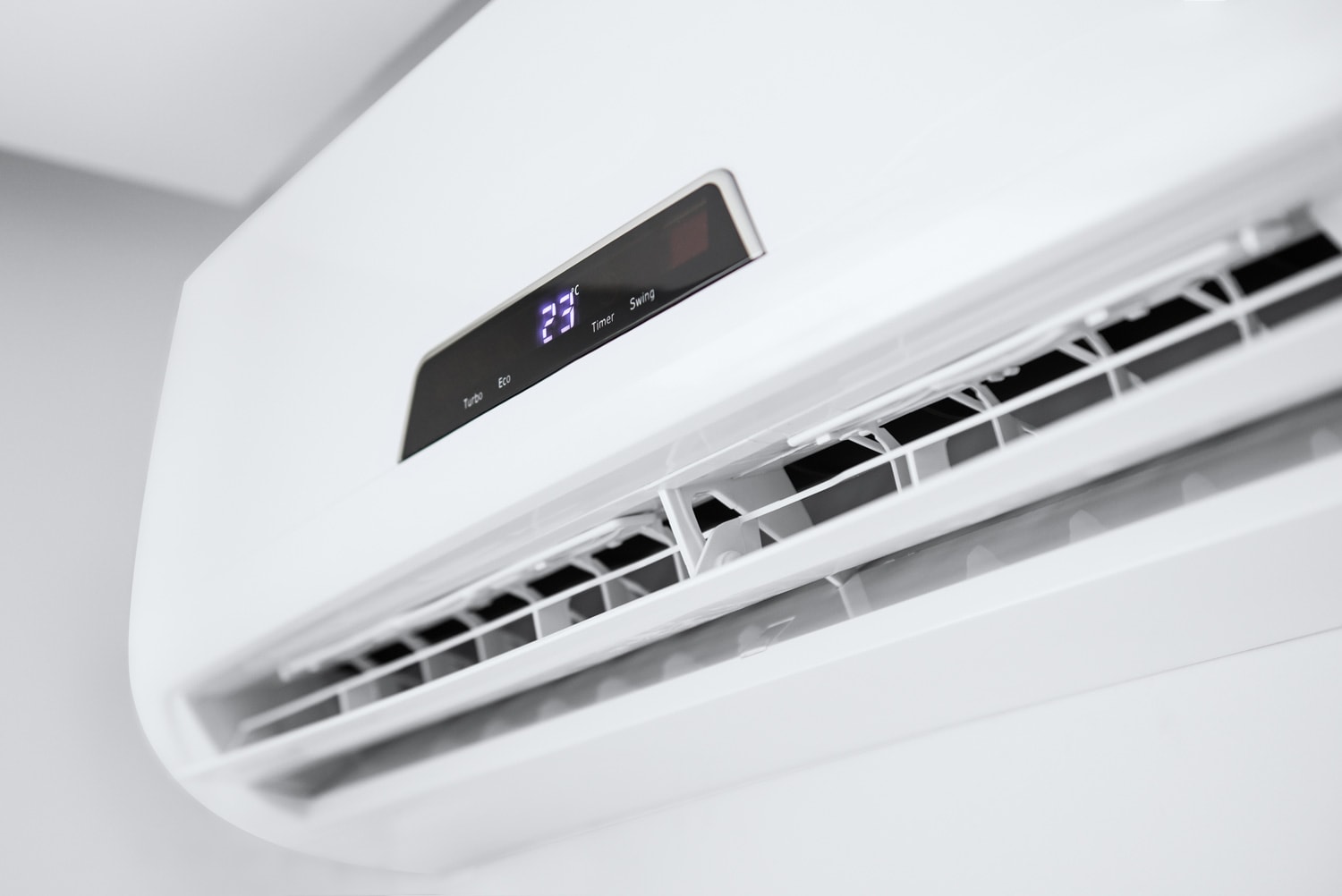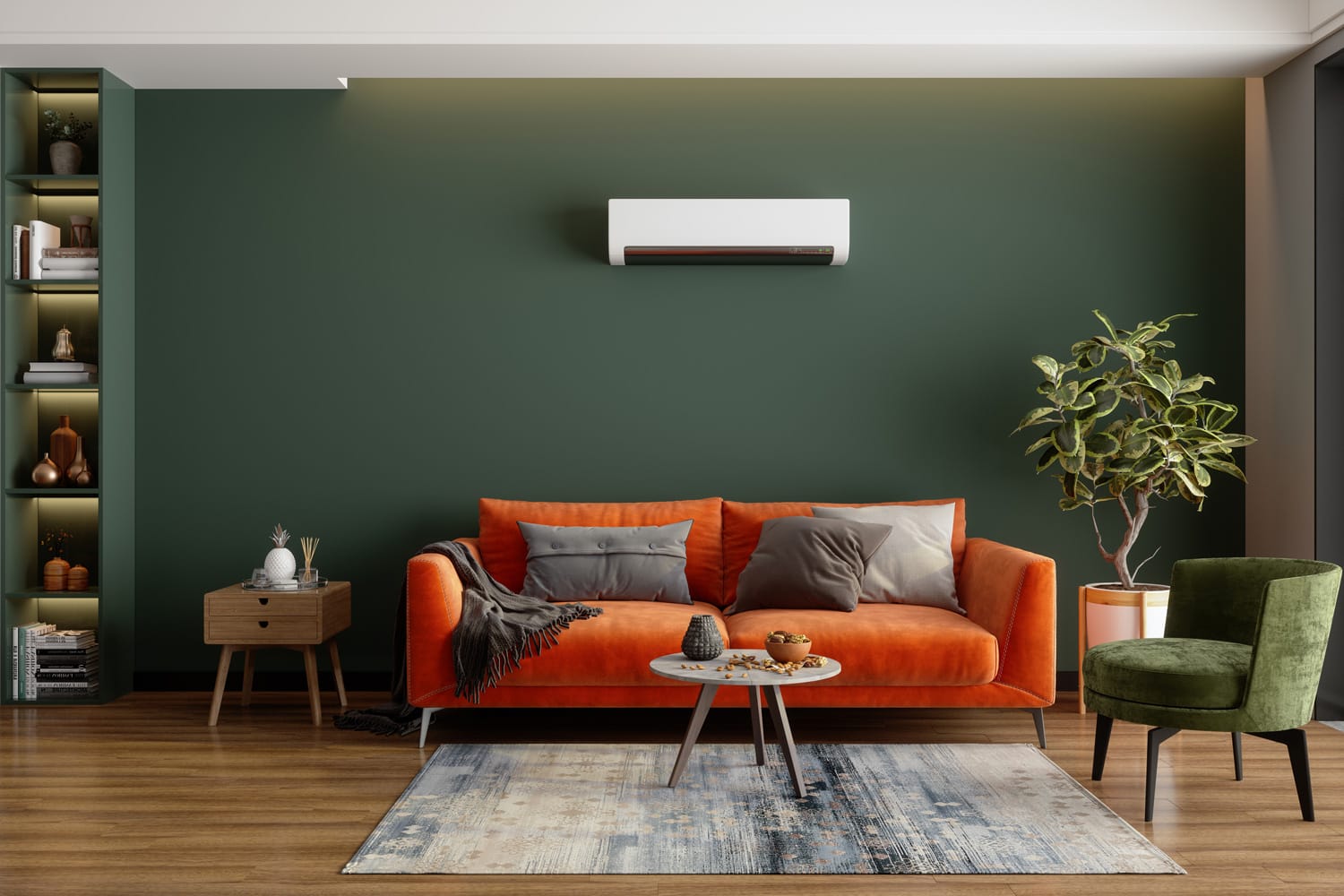Your HVAC system has an open duct connected to a filtered outdoor vent, allowing fresh air to flow through a screen. The fresh air intake on an air conditioner is beneficial if you live in an environmentally green area. Still, you may want to switch it off if you are in a location with heavy air pollution. We'll discuss how to turn off your fresh air intake.
To close the air supply from the outside, find your intake: usually located in the attic or ducted to the central air handler. Shut the dampers close or turn off the fan switch if it's operated with a fan. Lastly, consult the unit's manual for additional instructions to ensure your safety.
The air quality in your indoor spaces should be a top priority for health and safety reasons. Your HVAC system should allow you to adjust the air supply circulating in your home and provide heating and cooling. Lucky for you, we've done plenty of research and are here to help. Let's dive in!

How Do Fresh Air Intakes Work?

Generally, an HVAC system can filter outside air through a duct or vent. However, it is unsafe to do so when the outside air is heavily contaminated with pollutants and dirt.
Fresh air intakes use the HVAC handler fan to haul in the air, filter it, and circulate it throughout your space. Note, this allows for better air circulation, reducing the amount of air being reused indoors.
Where Can You Use Fresh Air Intakes?
Newer homes with moderate to excellent air quality are well suited for fresh air intake systems. Considering that newer properties have better insulation and are airtight, they are at less risk of exposure to poor air quality.
Fresh air intakes allow filtered outside air to flow into your home without changing the interior climate. Keep in mind, this is great because it helps your home's climate stay comfortable.
How To Improve Indoor Air Quality Using Your HVAC

Because of pollution and environmental neglect, the air outside of a home is not always ideal. We need to utilize innovative HVAC appliances to improve the air quality in our homes and other resources to make sure a house is comfortable and healthy.
Luckily, there are quite a few ways to do this. We have included them below:
Increase Air Circulation
Take advantage of fresh air, expel dust, humid air, and maintain an even temperature by switching on your fresh air intake.
Considering that the blower motor is responsible for distributing air, you can let it run by itself without turning on the heating or cooling setting.
Doing this is beneficial for people who suffer from allergies and asthma and are already comfortable with their current temperature.
Close Your Fresh Air Intake If Outdoor Air Quality Is Poor
Unclean air is harmful to our respiratory health, especially for toddlers or elders. If there is a wildfire or smog, it's best to let the HVAC system keep you cool or heated and keep your vents closed with the damper.
Again, you can still use your air conditioner, so this shouldn't affect your home's climate.
Regularly Check And Replace Your HVAC Filters
Usually, your filtration system will be nullified if you neglect the HVAC filters. If they become too choked with debris and dust, you could expose yourself to bacteria and diseases.
Although getting the filters dirty is normal, you may need to change or wash them more often, depending on where you live.
Furthermore, your unit's problems can sometimes be due to a dirty filter, so regularly checking, changing, and cleaning them is essential.
Schedule Annual HVAC Tune-Ups
Typically, you need to have your HVAC unit checked at least once a year. Doing this will ensure your HVAC runs smoothly and keeps your indoor air clean.
Additionally, your HVAC technician should check your AC's condenser, evaporator coil, and compressor, which are the most critical parts of the unit. If there are any issues, make sure to repair them promptly.
Invest In Quality Indoor Air Systems
Continuously improve your indoor climate by investing in a high-quality air purifier, humidifier, and dehumidifier. If you live in an area that experiences extreme temperature fluctuations, these devices prove helpful.
Again, it's better to spend a little extra money to breathe healthier air.
Types Of Home Ventilation Systems

Your unit's fresh air intake is only a part of an innovative ventilation system, allowing healthy air to fill the room and make you more comfortable.
Here are other systems that can benefit you and your home:
Natural Ventilation
True to its name, natural ventilation does not rely on any machine to circulate the air. It allows the air to flow freely and escape through the windows above after absorbing enough heat.
Usually, this applies to homes in rural or tropical areas where air pollution is not present and there are no risks of cold drafts.
Natural ventilation is unreliable if you are sensitive to temperatures or live in an industrialized area with poor air quality. You will need a more solid system if this is the case.
Trickle Ventilation
Next, there is a slightly more revamped version of natural ventilation. Trickle ventilation uses small vents above the windows to facilitate the exchange of air better, minimizing any dust that might come into your home.
Stack Ventilation
Following its name, this ventilation system is one where windows are "stacked" together. The lower windows will pull in fresh air, while the upper windows let out stale air.
Note, this follows the "chimney" effect in which the dense, hot air rises; while cooler air flows in, falling downward.
Spot Ventilation
Spot ventilation is often seen in kitchens with a fan above a stovetop. Additionally, this type of ventilation only functions in a specific spot where it is directly placed.
Generally, it's ideal in kitchens since you only want to avoid the smell of food from spreading throughout the home. But, this type of ventilation will not be able to circulate air around your home efficiently.
Whole-House Ventilation
A whole-house ventilation system is your best option if you desire full control over your indoor climate. It's because this includes an HVAC system with a fresh air intake, exhaust fans, and balanced ventilation.
Exhaust Ventilation
Exhaust ventilation works through exhaust fans. It depressurizes the air, expels or "exhausts" the hot air out of the room, and pulls in cold air through the gaps.
If you live in a humid area, the exhaust fan may draw in heavy air and damage your wall cavities.
Supply Ventilation
Supply ventilation relies on HVAC ductwork to distribute air around the house. Like your AC's fresh air intake, supply ventilation pulls outside air into your home and filters it before expelling it.
Balanced Ventilation
Balanced ventilation is a system that ensures that fresh air pulled inside and stale air exhausted outside remains balanced.
Although ducts and vents are often used for this, your unit's fresh air intake function can also handle this task. However, you don't want to use balanced ventilation if extreme weather is present.
Energy Recovery Ventilation
This is an energy-efficient air quality control system. It uses the same energy for both expelling stale air and conditioning the pulled-in air, saving energy.
It has two types: a heat-recovery ventilator (HRV) and an energy-recovery ventilator (ERV).
HRV allows heated air to be mixed with cool air during the winter, while ERV is utilized in the summer months to transfer humidity from the inside out.
What Do You Do In Extreme Weather Conditions?

Closing your fresh air intake and opening vents during intense smog or a fire advisory may not be enough.
You will need to ensure that every corner of your vent system is free of dust and dirt. Also, your filters should be clean or changed. Additionally, you'll need to turn off your exhaust fans and close windows, so only clean air circulates to protect your health.
When you are sure that everything is scrubbed clean, switch on your heating or cooling system and your air purifier.
The Wrap Up
We must always pay attention to home ventilation and indoor air quality. It determines our health and comfort and ensures that no bacteria grows on the crevices of the house.
The AC's fresh air intake may be beneficial, but it is critical to know when to turn it on or off. Furthermore, you want to turn off your fresh air intake if the weather outside is poor.
Did you make it to the end? Check out these helpful related posts below!
